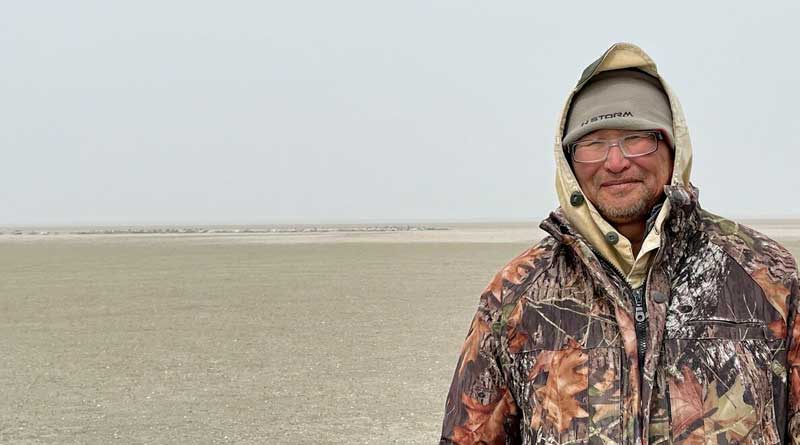Monofilament Fishing Nets should be Banned
My daughter Assel (she is also a biologist) and I re-read the draft order of the Fisheries Committee of the Ministry of Ecology, Geology and Natural Resources of the Republic of Kazakhstan (MEGNR RK), which states that it is necessary to allow the use of fishing nets made of nylon and polyamide monofilaments in the Caspian Sea, in fishing areas along the coast of the Mangistau Region.
Everything inside me boils, rage and tears – who then needs our many years of work to preserve the Caspian fauna?! Why is science needed at all, if the ministry, called to protect nature, acts contrary to the opinion of scientists who oppose this barbaric fishing gear?
MEGNR RK intends to allow the use without limitation of very thin nets with a thread diameter of 0.3 mm and a mesh size of 40 mm or more.
Set up nets and catch fish, both small and big! And along with fish, the Caspian seal, and sturgeon, and beluga, and stellate sturgeon, and the thorn fish disappearing, since these monofilament nets catch everything indiscriminately. They differ from multi-filament nets in their increased catchability and lack of selectivity – everything passing by gets into them.
And they are notable for their low price – they are cheap! They are popularly called “Chinese”. Previously, our markets had been littered with such fishing nets, then restrictions on their sale were introduced. But they sold from under the floor. Nevertheless, there was a constant struggle against their use, and the fish inspection seized kilometers and kilometers of fine-meshed nets.
Now they wish the gate to be fully open.
It is impossible to untangle fish from a thin monofilament net without particularly reverent efforts. But which of the fishermen will do it on the waves, when in these nets a fish is entangled for every ten centimeters, and sometimes the life of the fisherman himself is at stake in such difficult conditions? So, either they tear the net with their hands, choosing the catch, and then leave the fishing net in the sea, or they can pull the net onto the ship, tear out the fish on the shore, and throw the damaged net there.
Disposable gear thrown into the sea turn into “ghost nets”, stand or drift, continuing to catch further, bringing death to all living things around. And those abandoned on the shore are destroyed under the influence of sun, turning into a destructive microplastic that penetrates into all living things and slowly kills them.
So, why has Kazakhstan suddenly decided to allow the use of nets made of synthetic monofilament in the Caspian Sea? If only in order to increase the catch of fish, then this will have a short-term effect. These nets will also catch juveniles, and in a year or two we will have to reap the benefits – a decrease in the fish productivity of the sea.
We have collected a lot of evidence that such nets are a big threat to the survival of the Caspian seal. We have photographs from the coast of the Tyub-Karagan Peninsula, showing the remains of a dead seal died in a monofilament net, and a photo of a sturgeon juvenile entangled in such a net.
In 2019, among 412 abandoned fishing tackle found, 112 were nets made of synthetic monofilaments with a mesh pitch of 30 to 45 mm. Imagine what lawlessness will begin if the ban on their use is lifted!
According to the law “On the Protection, Reproduction and Use of the Wildlife”, the actions are prohibited if they lead to: the death of rare and endangered species of animals are not allowed; to a reduction in the number or habitat disturbance of rare and endangered species of animals… Therefore, the use of synthetic monofilament nets in the Caspian Sea would be a direct violation of this law.
And in this situation, when, on the one hand, the interests of fishermen and revenues to the budget, and on the other, the Caspian seal – a powerless animal, slaughtered with stones and sticks, suffocating in nets and in the polluted Caspian, MEGNR RK takes the side of fishers, violating the law and the principles of humanity.
Mirgaliy T. Baimukanov, Director of the Institute of Hydrobiology and Ecology, Ph.D. (on Biology), Head of a Kazakhstan group of the Caspian seal researchers.
Source: Time Socio-political Newspaper of Kazakhstan.

